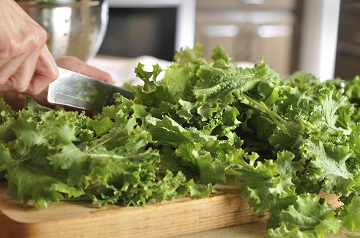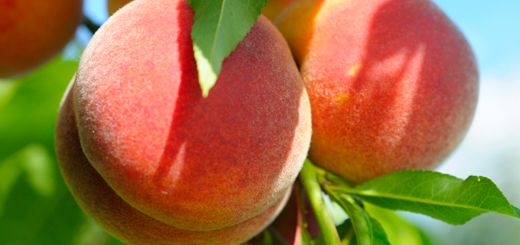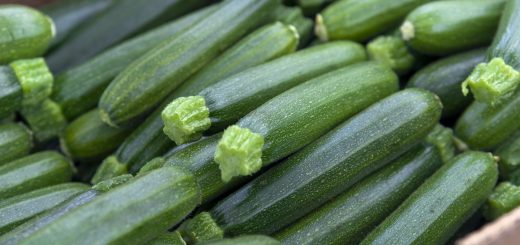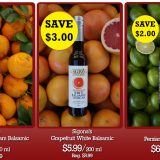In the Store with Sigona’s Featuring: Kale
Diane Rezendes, food writer
My mom still laughs when I tell her kale is still considered trendy. Not long ago I told her I’d roasted some kale chips, fully expecting her “that’s weird” verdict – the one generally reserved for anything she deems “too California.” She surprised me when she said, “Oh, that takes me back! Your grandmother from County Clare loved those. When I was a girl and she’d take me into town (‘town’ meant Boston), she always bought a bag of them.”
Growing up, our main use for kale was the traditional kale and linguiça sausage soup from the Azores, which everyone’s mom knew how to make, Portuguese or not. Now among most Americans, kale is more common in chips, salad, sautés, and green drinks than it is in soup.
Little did we know it was a superfood. Kale – like so many greens – is one of the most nutrient-dense foods you can eat. It’s chock-full of vitamins, minerals, and antioxidants.
Unlike many other plant protein sources, kale has all 9 essential amino acids – that is, those your body cannot manufacture on its own, and which have to be obtained from food. And the 35 calories in a cup of kale have 4% of the RDA of protein and 5% of fiber. That same cup contains more than twice your RDA of Vitamin A, important in supporting the immune system and a key nutrient for eye health. It’s also high in B vitamins, C and K, as well as minerals such as potassium, iron, and magnesium.
It’s a cousin to broccoli, Brussels sprouts, cabbage, and cauliflower, and its heritage goes back at least to ancient Greece and Rome. Tuscan (also known as Lacinato) kale was developed in Italy much later, in the 1800s. It’s a staple of Italian cooking, and has a slightly sweeter taste than the more common curly kale.
Choosing and using.
The leaves should be vibrant in color with no wilting. Wash them well: bits of dirt can cling to the back of the highly textured leaves. Cut the stalks away, or simply tear the leaf from their central stem. Some recommend letting the kale soak in water for 5-10 minutes to get every bit of dirt, but not every home cook is that patient.
The kale is now ready to use for juicing, salad, or cooking. Some chefs recommend massaging cut-up kale to make it sweeter-tasting and more tender to the bite. There’s good science behind the practice: massaging the leaves partially breaks down cellulose structure. Adding olive oil before massaging will help the process, but it is not necessary. With super clean hands, just play with the leaves for a couple minutes until they start to soften. Taste the kale now and again till it suits you. Add some lemon juice, along with salt and pepper to taste.
Be sure to check out this week’s recipes for some more ideas – and pick up your free kale when you spend $30 or more in the store.













